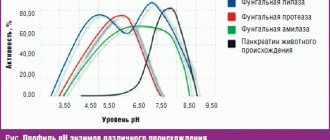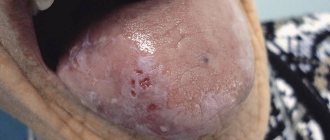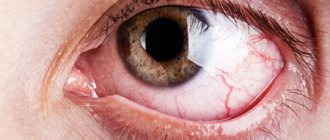For many people, the topic of poop is so personal that they don’t want to share it or talk about it with anyone. But they may not realize that sometimes it is useful to find out what kind of poop other people have, what form of stool they have, color and perhaps even smell. It's quite normal to show interest in this. The shape of your poop, exactly as well as the color, can suggest or hint at some possible malfunctions of the body. If you do not want to share very personal processes with other people, then we will help you keep the secret and tell you what shape and size feces are and what it can mean.
When visiting a doctor, it is not uncommon to hear a question regarding poop; the doctor may ask what shape, color, and how often you relieve yourself. Some people are stunned by such questions; they do not even understand the purpose of this question and how decisive a role it can play already at the interview stage, including speeding up treatment and making the correct diagnosis. English doctors decided to correct the problem of patient embarrassment and developed a so-called scale for assessing stool forms - the Bristol Stool Forms Scale.
REFERENCE!
The Bristol Stool Shape Scale was developed by doctors in England to more conveniently classify the shape of poop and was introduced into use in 1997.
With the help of the Bristol Stool Shape Scale, it is easier for patients to overcome the psychological barrier. Looking at clear pictures, a person can not describe to the doctor the shape of his excrement, but name the desired type or point to a picture depicting the most suitable shape of poop. It is also useful and convenient for self-testing at home.
Signs of unhealthy stool
Hard stool from separate pieces indicates constipation, dehydration, or intestinal obstruction. The patient has to exert force during bowel movements to empty the rectum, and this often leads to inflammation of the hemorrhoids. Black feces often occur in newborns in the first days after birth. In adulthood, this may indicate the presence of a malignant or benign tumor. Divide feces into types according to the table.
| Type | Character traits | Causes |
| First | Individual hard pieces up to 2 centimeters in size. | Intestinal damage, obstruction, severe tumors. |
| Second | Large feces with a lumpy structure. | Small size and painless bowel movements are considered normal. Often indicates a lack of free water. |
| Third | Large stool with fine lumpyness. | Lack of water, mild inflammation in the intestines. |
| Fourth | Soft styled look. | Normal intestinal condition. |
| Fifth | Soft balls. | Painless bowel movements are considered normal. |
| Sixth | A soft chair with torn edges. | Poisoning, bacterial infections, frequent consumption of mineral water, salty foods. |
| Seventh | Loose stools. | Poisoning, bacterial infections. |
Red stool indicates open bleeding in the lower intestines. Possible inflammation of the colon or hemorrhoids. You should only worry if the situation persists for more than three days and is accompanied by pain. Green feces occur as a result of abundant consumption of greens and vegetation.
general characteristics
The appearance of an unusual color of stool is an objective symptom that patients always notice.
The color of stool varies from grayish-white to black. In this case, the process of defecation is sometimes accompanied by pain and discomfort in the abdomen. With a visible change in the characteristics of feces, patients often experience negative psycho-emotional sensations caused by the fear of a serious illness. If the color change is physiological in nature, the person does not experience any unpleasant symptoms either during bowel movements or during the day. A change in the color of stool is often accompanied by other dyspeptic disorders: nausea, vomiting, abdominal pain, impaired stool frequency and consistency of feces, which indicates the development of diseases of the digestive tract. The combination of pale gray stool and dark urine usually indicates hepatitis and other acute inflammatory diseases of the liver. The appearance of black, brick or red feces during defecation is characteristic of bleeding from the gastrointestinal tract of varying intensity and requires an immediate visit to a gastroenterologist.
Feces for bowel cancer
You should be concerned if diarrhea or constipation continues for more than three days. The tumor may close the lumen and the size of the stool decreases. After bowel movement, the feeling of fullness in the intestines remains. Additional risk factors:
- sudden weight loss;
- pain and spasms last longer than a day;
- constant weakness;
- increased fatigue;
- shapeless stools of dense green or black color.
The described symptoms clearly describe the manifestations of a malignant and benign tumor. You should immediately consult a doctor and undergo a medical examination. Also, bloody mucus and bloody discharge raise suspicion. Black stool indicates open bleeding.
The higher the stage of cancer, the more noticeable the external manifestations. Spasms and pain are not relieved by analgesic drugs and antispasmodics. It is painful to defecate, the patient spends a lot of time in the toilet. It becomes painful to sit down and stand up. If you do not consult a specialist in time, at this stage the tumor could have already metastasized to other organs.
Changes in bowel habits
Oncology provokes the development of pathologies in the area where the tumor grows. If Cancer is concentrated in the intestines, it affects the shape, color and consistency of stool. Changes in bowel habits are accompanied by:
- gagging, vomiting, nausea;
- belching, gas formation in the stomach;
- bloating, flatulence;
- pain and spasms.
Often there is no stool for more than 2-3 days. It happens that liquid stool leaks into underwear while sitting or sleeping. The density of stool increases and the quantity decreases. Oncology is accompanied by pain in the abdomen and strong, prolonged cramps. At the first signs, you should immediately consult a doctor.
If there is obstruction, you must seek help from a medical facility.
The body's waste begins to rot in the intestines and decompose. The processes corrode the walls and have a detrimental effect on peristalsis. A patient with peritonitis dies within 6 hours if he is not provided with qualified medical care. Rarely, cancer may be accompanied by diarrhea with bloody mucus and dark clots.
Changing appearance and color
The pathological process affects not only the shape, but also the color of stool. Often the symptoms of cancer at the initial stage coincide with hemorrhoids, inflammation of the lower intestines. Therefore, it is necessary to seek medical examination. This will allow you to detect the disease at an early stage.
If blood enters the intestines or stomach in large quantities, the stool turns black. This color indicates a serious pathological disorder. Bleeding does not stop on its own. Fecal masses become smaller, denser, darker. When cancer occurs, they acquire a dark green, marsh or black color with a characteristic pungent odor. Often accompanied by:
- sudden weight loss;
- false urge to defecate;
- loss of appetite;
- persistent constipation, diarrhea.
Cancer can only be diagnosed through laboratory testing. To do this, take a benzidine sample. Detection of occult blood will help determine the presence or absence of bleeding. A medical specialist has the right to prescribe additional examination.
Development mechanism
Normally, stool is brown in color, which can vary from light to dark shades depending on dietary habits. This color is due to the presence of bilirubin metabolic products - stercobilin and mesobilifuscin. A change in the color of stool occurs when dyes are ingested in food or medications, or when there are pathological impurities (blood, bile pigments). With diarrhea, feces become golden yellow because their accelerated passage prevents the conversion of direct bilirubin to stercobilin.
Colorless or gray stools are characteristic of the occurrence of mechanical obstructions in the paths of bile outflow into the intestines (cholelithiasis, space-occupying formations of the pancreas, duodenum), as a result of which there are no coloring substances in the stool, which are normally formed from conjugated bilirubin. The stool takes on a grayish tint and a clayey consistency when barium sulfate contrast is taken orally, due to chemical reactions in the stomach and intestines.
Feces may turn greenish, which is often normal and is caused by eating a lot of fresh green vegetables. These products are rich in the pigment chlorophyll, which is not destroyed by digestive enzymes and provides a characteristic coloring. A change in the color of feces to green also occurs with pathological diarrhea, when biliverdin, a precursor of bilirubin, is massively released along with bile, which does not have time to go through all the stages of chemical transformations in the intestines.
Black coloring of feces appears when taking bismuth salts, which under the influence of saliva form insoluble complexes with black sulfur. Dark coloring also occurs when iron salts enter the feces. Tarry, black stools (melena) develop when there is bleeding from the stomach and upper small intestine. The dark color is due to the conversion of hemoglobin into hematin hydrochloride under the influence of enzymes and intestinal flora. When bleeding from the colon and rectum, hemoglobin is not destroyed, so the stool is red.
Symptoms of which diseases can be determined by the color of stool?
Depending on the color and consistency of stool, the development of pathology in the intestines can be predicted. Thus, green feces are provoked by abundant consumption of greens and long-term use of antibiotics. Occurs after an overdose of laxatives. Green bowel movements occur after a gastroenterological infection.
Orange stool is not dangerous. This shade is just a consequence of eating foods with a high concentration of beta-carotene. Excessive consumption of sweet potatoes, mangoes, pumpkins, apricots and carrots leads to coloration of stool. Other shades:
- Red
. Small bloody impurities, streaks. Symptom of irritable bowel syndrome, Crohn's disease, anal or rectal bleeding. - Black
. Internal bleeding of more than 500 ml can occur in both the intestines and stomach. Symptom of cancer. - Bright red
. It is provoked by pathologies in the lower parts of the large intestine. Often occurs as a result of an infectious disease.
Tarry stool gets its shape and consistency due to a pathological process - the baking of a large amount of blood in the intestines. In a medical setting, such stool is called melena. Patients are admitted to the hospital for examination to establish a diagnosis.
Forms of stool according to the Bristol scale
The Bristol scale distinguishes 7 main types of stool. On the left side is an illustration of poop. In the middle – type numbering and a brief description. On the right side there is a transit scale - it indicates the time of formation of one or another type of feces. You can find other variations of the Bristol scale.
The Bristol Stool Shape Scale does not accurately diagnose the disease, since it only presents classifications of poop shapes. In the case of any disease, this data is not enough and it is necessary to take into account such parameters as the color of feces and the buoyancy of poop. At home, this table is useful only for an approximate assessment of the condition of your intestines. Also, if necessary, it will facilitate your dialogue with the doctor and reduce the level of embarrassment.
We recommend that you print out the Bristol Stool Shape Scale and hang it in your toilet. This way it will be visible to you and you will be able to determine the shape of the poop immediately after you poop.
Associated symptoms
Often the color of stool is caused by taking medications, eating fruits, vegetables, and drinks. Therefore, it is necessary to monitor specific signs of intestinal ailments.
It is acceptable to suspect a pathological process, but without examination even a doctor will not make a diagnosis.
Signs include gas formation, flatulence, belching with a pungent odor and taste. Digestion and absorption of eaten food is accompanied by severe nausea and vomiting. Any intestinal or stomach disorders, coupled with changes in feces, indicate an unfavorable process in the body.
Conventionally, accompanying symptoms are divided into intestinal and extraintestinal. Disorders actively manifest in the last stages of pathology development. At first, it is difficult to detect the disease on your own. Various manifestations from delayed evacuation to abdominal pain are a serious reason to consult a specialist.
Classification
There are physiological changes in the coloring of feces, associated with certain dietary habits or the use of a number of medications, and pathological, caused by various inflammatory and destructive processes in the gastrointestinal tract and biliary system. To make a preliminary syndromological diagnosis, a classification is used taking into account the nature of stool coloring:
- The feces are grayish-white in color
. Grayish, “clayey” feces are often passed for several days after oral administration of barium sulfate contrast agent. Pale coloration of stool can be associated with impaired flow of bile into the duodenum due to biliary pathology, hepatitis, and pancreatic neoplasia. - The stool is yellow
. Yellow coloration is usually observed when food digestion is impaired due to enzyme deficiency. This color is characteristic of pancreatic diseases, malabsorption syndrome, and celiac disease. A golden-yellow color often indicates an excess of unchanged bilirubin. - Green stool
. A change in color appears when there is a large amount of lettuce leaves and green vegetables in the diet; the greenish-black color is associated with taking iron supplements. The color changes to green with diarrhea of various origins and severe dysbiosis, when the rate of transit of feces through the intestines is disrupted. - The stool is red
. The appearance of a brick-red color is normally associated with excess consumption of tomatoes, red berries and vegetables. A change in the color of stool to bright red usually occurs with heavy bleeding from the lower gastrointestinal tract, which occurs with anal fissures, hemorrhoids, and ulceration of neoplasms. - Black feces
. Stools become black when taking preparations of activated carbon and bismuth, blueberries and black currants. Black, tarry feces (melena) are a dangerous symptom that indicates profuse bleeding from the stomach and upper small intestine.
Intestinal signs
Standard intestinal signs of the development of pathology include pain, bloating, upset stool, painful or false urges. Foreign impurities also serve as a reason to contact a specialist. The norms of bowel movements are variable; normally, bowel movements can be either once every three days or three times a day. The main thing that:
- the shape, consistency and color did not change;
- there were no impurities in the feces;
- there was no pain during bowel movements;
- The frequency of bowel movements should be approximately the same.
Localized pain indicates the active development of pathology. They can concentrate or migrate throughout the intestinal area. In the case of internal lesions, they can “give” sharp or dull pain to another area (lower back, sacrum). Painful manifestations may be:
- spastic;
- peritoneal;
- distensional;
- vascular.
Flatulence and bloating are integral signs of the development of pathologies. Often indicate cicatricial damage to dry intestines. If there are impurities in the stool in the form of blood or pus, then erosive or ulcerative processes occur in the body.
Treatment of constipation
If the pathology is not caused by diseases of the internal organs, the answer to the question of how to treat constipation in adults is simple. The main methods of restoring the functioning of the gastrointestinal tract are an active lifestyle and the use of products with a laxative effect.
Experts recommend:+
- introduce vegetables, rye bread with bran, fermented milk products, dried fruits, nuts, legumes into the diet;
- more often eat boiled beets seasoned with vegetable oil;
- replace butter and sour cream with unrefined vegetable oil;
- move more and walk in the fresh air;
- strengthen the abdominal muscles by performing special exercises;
- drink more pure still water - at least 8-10 glasses per day;
- stop smoking and limit alcohol intake;
- do not abuse enemas - they should be used only in extreme cases.
Thanks to these simple rules, it is possible to cure constipation in adults. However, in some cases, changing your diet and physical activity does not help. You have to resort to taking laxatives.
It is known that in the treatment of constipation, especially functional constipation, adding dietary fiber to the diet is effective. Include fresh vegetables and fruits, dried fruits, and cereals in your daily diet. An important component of treatment is taking laxatives, especially if you need to solve the problem in a short time. That being said, some laxatives (bulk laxatives) work on the same principle as dietary fiber from plants and supplements.
Bulk laxatives work as follows: they absorb water, increase the volume of stool, make it softer, changing the consistency, and stimulate the intestinal walls to contract. Faster, more comfortable, predictable bowel movements occur. Fibers can be synthetic and natural, of plant origin.
The natural preparation “Fitomucil Norm”, created on the basis of plant fiber, helps to quickly and delicately cure constipation in children and adults. This is what doctors often recommend. There are no flavoring additives or dyes in the modern English biocomplex.
It contains only natural ingredients - the shell of plantain seeds and the fruits of home plum. The natural composition is absolutely safe, so even children aged 3 to 14 years can drink the product as prescribed by a doctor.
There are few contraindications for use: individual intolerance to the components, acute inflammatory diseases, gastrointestinal obstruction.
"Fitomucil Norm" is not addictive even with long-term use. The product is recommended for use by the Russian Society of Obstetricians and Gynecologists and the Russian Association of Gastroenterologists. They can treat constipation in women while bearing and feeding a child.
The drug "Fitomucil Norm" has a complex effect on the body:
- has a gentle effect on the gastrointestinal tract, providing delicate cleansing;
- helps normalize your own microflora;
- removes toxins, reduces cholesterol and blood sugar levels;
- fights hunger;
The product “Fitomucil Norm” is a gentle and effective solution to a delicate problem. Before treating constipation, be sure to consult a gastroenterologist. The doctor will prescribe the necessary tests and determine the cause of the pathology.
There are other general recommendations for treating constipation in adults. It is important to eat small meals and avoid episodes of overeating or prolonged fasting. The best option is to eat at least 5 times a day.
Develop the healthy habit of getting out of bed immediately after waking up. Try to wake up so that you have enough time to go to the toilet in the morning (at least half an hour - the time the gastro-colitic reflex is triggered), monitor the regularity of bowel movements, try to build an individual rhythm of natural bowel movement.
This will be difficult for those who work irregular hours. If possible, it is better to choose an activity that will allow you to adhere to a strict daily routine.
If the reason lies in taking medications, stopping them or reducing the dosage without consulting your doctor is strictly not recommended. Visit a specialist and tell them that you are suffering from a side effect of the medication. The doctor will select an alternative or tell you about ways to overcome the problem without changing the drug.
In cases where constipation is caused by organic and other pathologies, treatment should be aimed at eliminating the underlying disease. So, for diabetes mellitus, the course of therapy will be selected by an endocrinologist, for liver diseases - a gastroenterologist or hepatologist, for disorders of the conduction of nerve impulses and diseases of the nervous system - a neurologist, etc.
Extraintestinal signs
Intestinal signs are often ignored by patients. They attribute them to overwork, poisoning, eating stale food or acclimatization. Extraintestinal manifestations include:
- sudden weight loss;
- joint pain;
- severe weakness;
- loss of appetite.
There may be an unreasonable increase in temperature, allergic rashes or other skin lesions. Often serious illnesses are accompanied by psycho-emotional disorders from tearfulness and irritability to insomnia. These include bleeding gums, pain in the tongue, and a feeling of loose teeth.
If external signs are detected, it is necessary to undergo an examination.
Extraintestinal signs can come to the fore, be activated more often than intestinal ones, and appear evenly. According to the recommendations, you should sound the alarm only after two to three days of extraintestinal and intestinal manifestations. Separately, each phenomenon can be dictated by an ordinary malfunction in the body.
Additional Information
Gastroenterologists and proctologists have developed a set of measures that help maintain intestinal health. It is necessary to follow a daily routine, monitor your health, eat right, and drink enough water. Choosing the right toilet plays an important role. Often, intestinal ailments are eliminated only after medical intervention and individual therapy.
The human body is able to independently get rid of toxins and poisonous substances in small quantities. Therefore, a single change in the shape, color or consistency of stool does not indicate a serious pathological process. If changes persist for up to three days, then you need to contact a medical specialist for an examination.
The gastrointestinal tract signals problems with pain, bloating, and the formation of too hard or liquid stool. If you ignore such warnings, then there is a risk of missing the development of pathology. Any long-term deviations from the norm are a reason to contact a specialist.
Baby has big poop
For children, in most cases, everything is the same as for adults. But most often, children poop large poops due to emotional stress. The child's psyche is quite shaky and easily vulnerable. They worry about the smallest trifles, which do not seem like such to them. An unfavorable family environment, problems at school, difficult contact with peers - all this can lead to constipation in the form of very large poop that causes pain. Again, poor nutrition and medications can easily disrupt the digestive processes of a child’s body.
Parents should take into account the fact that a child’s body suffers from illnesses much more than an adult, since he is not yet strong enough. Therefore, it is recommended to periodically monitor your child’s stool.
In fact, the problem of the formation of large feces is very relevant and widespread. Many people suffer every day and experience extreme pain when visiting the toilet. At the same time, they are in no hurry to see a doctor, as a result of which this leads to the fact that in addition to constipation, other serious diseases develop that will have to be fought for a long time. Therefore, you should not self-medicate and wait until the “rooster pecks”; go to the doctor, he will prescribe a comprehensive examination and determine the true cause. Based on this, treatment will be prescribed.
A site about poop is always with you. Relief!








